Cats are impressively strong, their strength can be seen in their agility, their ambush hunting skills and their speed.
Cats may not look particularly strong and they certainly don’t look “bulky” but they have evolved to be powerful hunters with lean muscles and light bodies.
Contents
What Makes A Cat Strong?
A cat’s strength primarily comes from their agility; their ability to run, jump and turn at speed.
Cats have a sturdy bone structure and sleek muscles meaning they can make fast movements with ease and control.
The cat’s muscular system is one of the largest systems in their body. Their muscles are highly evolved and help cats catch prey and escape from threats.
In addition to this, cats have a powerful bite force that allows them to be fast and lethal when catching prey.
Although cats don’t look bulky or particularly muscular, they are naturally strong and have lean muscles.
Cats also have fast reflexes, sharp teeth and retractable claws, all of which helps to contribute to their overall strength and hunting capability.
How much can a cat lift?
The strength of a cat largely depends on their size, breed, and gender.
A Maine Coon is likely going to exhibit more strength than a smaller breed.
However, a pound-for-pound comparison would show the overall strength is going to be more or less the same.
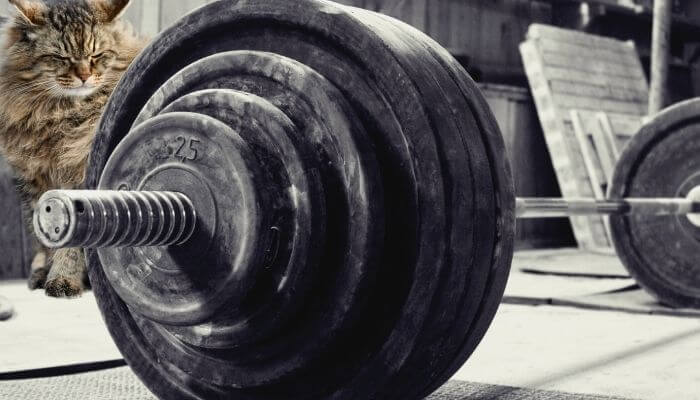
Cats can often be seen carrying toys, kittens, or prey such as fish as they walk around.
To help work out how much weight a cat can carry we can look at the weight of a kitten:
The weight of a kitten depends on how old they are; a 1 month kitten weighs between 300 – 600g, a 2 month kitten weighs between 600-900g, and at 3 months old (when they are weaned) they are between 900 – 1.3kg.
It’s unlikely the cat will pick up and move a kitten older than this.
Adults cats are able to lift and carry kittens from one location to another without a problem.
A good estimate of how much the average cat can lift or move is 2-5kg.
This would be over a short period of time without any struggle.
This means the 2-5kg estimate is by no means the maximum weight a cat can carry.
Are cats stronger than dogs pound for pound?
It’s hard to say if cats are stronger than dogs in a pound-for-pound comparison. Cats are faster, more flexible and have incredible reflexes.
The biggest disadvantage to dogs is the size difference.
Once the size difference is taken away, the two animals would exhibit quite similar strength.
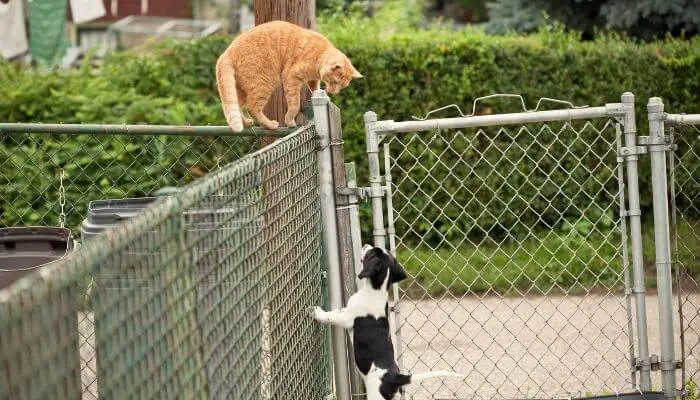
However, a dog and a cat are strong in different ways.
In a cat vs dog scenario, both animals have their own advantages and disadvantages that could result in either one of them coming out on top.
Cats have speed, sharp claws and excellent reflexes while dogs have body strength and a strong bite force.
The breed of both the cat and the dog would be an influencing factor.
For example, certain dog breeds (particularly those that have been bred with flat faces) have lower bite forces so a cat may be stronger in a direct comparison.
When looking at how cats and dogs live in the wild, most cat species are solitary and hunt small prey such as rodents while many dogs live in packs and rely on teamwork, endurance and stamina to hunt.
The evolution of the two focus on different things so defining their strength and which is the strongest is difficult.
Are Cats Stronger Than Humans Pound For Pound?
Pound-for-pound cats are probably stronger than humans. Unless the human being considered was a top athlete or weightlifter, then maybe the results would be a little bit different.
However, the average person is probably not quite as strong as the average cat in a pound-for-pound comparison.
This is because a cat is more flexible and much better evolved for speed.
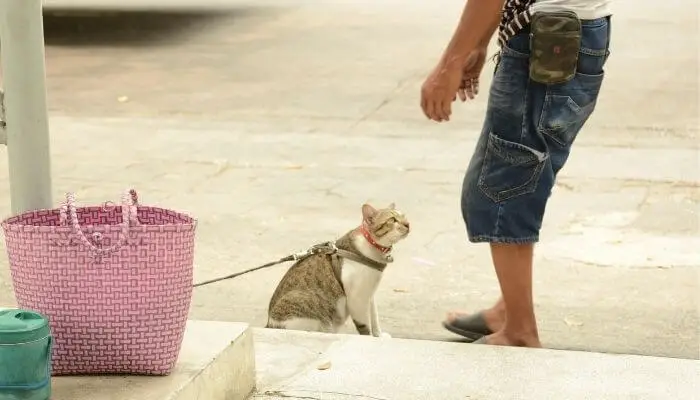
Humans have the benefit of strength and stability but if a cat and a human were the same size then the cat is going to be stronger.
To understand the strength and capability of a cat, you only need to look at their wild counterparts to see some of the skill and strength they are capable of.
Even trying to hold your cat while you bathe them could give you some insight into their strength, speed and flexibility.
As you may be able to imagine, the strength advantage of humans quickly and considerably reduces as you begin to consider wild cats.
Even smaller cats such as bobcats are incredibly strong with an impressive jumping ability and bite strength.
Are House Cats Stronger Than Wild Cats?
Overall, wild cats are larger and stronger than house cats. However, domestic cats do share many similarities with wild cats including their hunting instinct.
If you watch a house cat hunt and compare this to a tiger hunting, you will see that both crouch down when stalking their prey and will rarely straighten their legs during this part of the hunt.
In addition to this, studies have shown that larger cats have weaker hindlimb muscles compared to smaller cats.
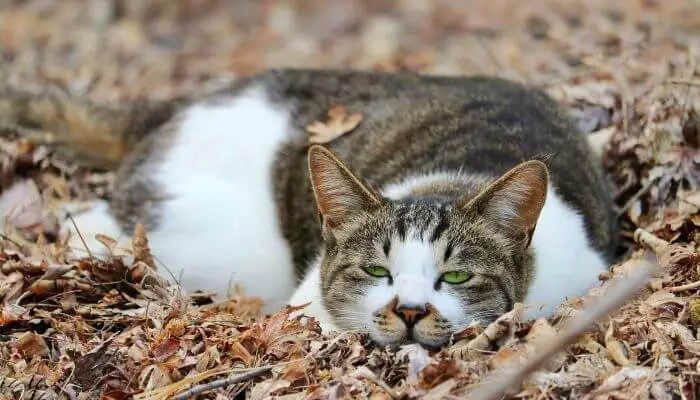
This means smaller cats are talented jumpers and are able to pounce and leap to catch their prey.
House cats also have more flexibility than larger cats which gives them an advantage.
One of the big differences between house cats and wild cats is how aggressive they are.
Wild cats are much more aggressive while house cats are more relaxed and tolerant.
The strength of house cats is surprisingly similar to that of wild cats so their hunting skill and talent should not be underestimated.
Cat Bite Force Quotient
Bite force quotient is a measurement that represents the bite force of the animal, taking into account the size of the animal as well as its bite force.
This quotient value makes it easier to compare a range of species. Although, the measurement doesn’t include how sharp the teeth are or the tooth form.
| Animal | Bite Force Quotient |
|---|---|
| Domestic Cat | 67 |
| Domestic Dog | 114 |
| Sand Cat | 130 |
| Tiger | 127 |
| Lion | 112 |
| Leopard | 94 |
| Cougar | 108 |
| Clouded Leopard | 137 |
The bite force quotient doesn’t necessarily tell you which animal will do the most damage but does give a good indication of which species have evolved to have a stronger bite.
As the table above shows, a domestic cat has a lower bite force than domestic dogs and wild cats. However, their teeth are incredibly sharp so even a “gentle” bite can do damage.
This bite force is all that is needed for domestic cats to successfully hunt prey and defend themselves.
There was no separate data available for the different cat breeds but it is likely there is some variation between the bite force quotient of the different breeds depending on their size.
How Strong Are Cats Legs?
Cats are able to jump 5-6 times their body length thanks to their impressive leg strength. In 2018, the Guinness World Record for the longest cat jump was recorded at 213.36cm (7 feet).
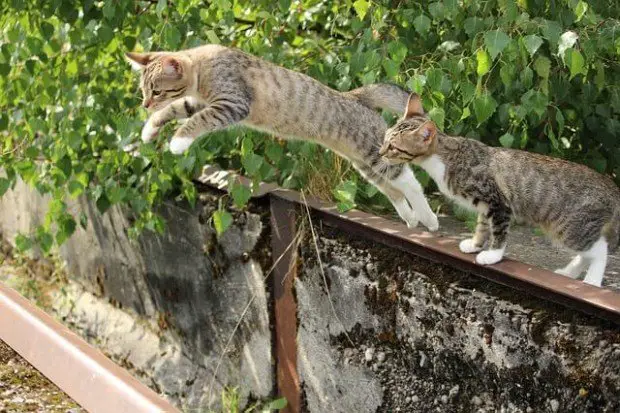
This was the longest jump rather than the highest jump, there is currently no record for the highest jump.
Not only this, the fastest house cats are able to run up to 30mph.
The speed of a domestic cat depends on its breed with Bengals, Somalis, Egyptian Maus, Manxs, Abyssinians, Ocicates and Siamese cats being among the most athletic breeds.
The fastest breed of domestic cat is recorded as the Egyptian Mau with a top speed of 48km/h (30mph).
Egyptian Maus also have impressive leaping abilities thanks to the power of their hind legs.
How Do Cats Show Their Strength?
Cats don’t show their strength in the same way as most mammals.
Most cats are ambush hunters which requires a different use of muscles and strength compared to other animals such as dogs or primates.
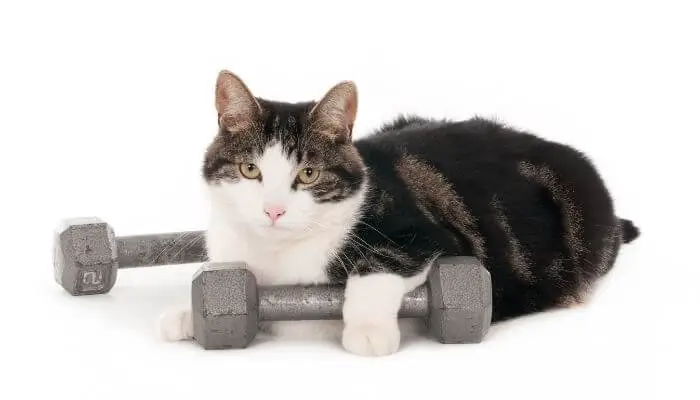
With that said, there are many ways a cat can show their strength. Some of the key areas include:
Speed
Cats have moments of intense energy (zoomies) which often last only a few minutes.
This short, high-energy burst of running around is part of a cat’s evolution to hunt more efficiently. The speed, motion and maneuverability of a cat are one of a cat’s key strengths.
Agility
One of the most powerful moves a cat can show is their ability to jump. Cats can go from standing still to leaping impressive distances at the blink of an eye. Their movements are quick, controlled and precise – a deadly combination for prey.
Climbing
When you see a cat climbing there’s no denying their strength. Cats can climb up surfaces that are completely vertical, something that takes a huge amount of skill, coordination and strength.
Even more impressively, cats can keep themselves up and continue to climb using only their front paws if their back paws lose grip.
Play
Playing is an important way of demonstrating strength. When cats play with toys they are often pouncing, throwing and batting them around.
These movements take a lot of skill, muscle and coordination so even though it might look cute your cat is actually fine-tuning and showing off their strength.
Biting
Another way of showing strength is biting. Bite power is important for hunting and cats have a lot of control over the bite power. This control is why domestic cats can bite lightly when they are playing and can also bite down powerfully to kill prey.
Dominance Vs Submission
If you are watching a cat interact with another cat, another animal or its environment, you may be able to see their strength (or weakness) shown in their behavior.
Primarily whether the cat is showing dominance or is being submissive.
Dominant Cat
If cats want to show their strength to other cats they will:
Stand upright, raise their tail, stiffen their ears and hiss.
This is all done to make themselves look big and strong and to exert their dominance.
If this is not enough to prevent a fight, the stronger cat will bite the neck of the weaker cat which will result in the weaker cat rolling over to expose their stomach.
This display of dominance could be displayed due to disputes over territory or food. Cats may also display their strength or protect their territory/ resources indirectly through scent marking and spraying.
Submissive Cat
In contrast to a dominant cat, a submissive cat will:
Look away, flatten their ears, tuck their tail between their legs, crouch and roll over. This is submissive body language but a submissive cat can quickly become aggressive or defensive and attack.
How To Make Your Cat Stronger
To be strong, a cat needs to be getting the right balance of nutrients in their diet so the first thing to do is ensure they are getting the right type of food at the right quantities.
If your cat doesn’t seem to enjoy their food you can help encourage them to eat more by splitting their meals into smaller portions, warming up the food and leaving them alone to eat in peace.
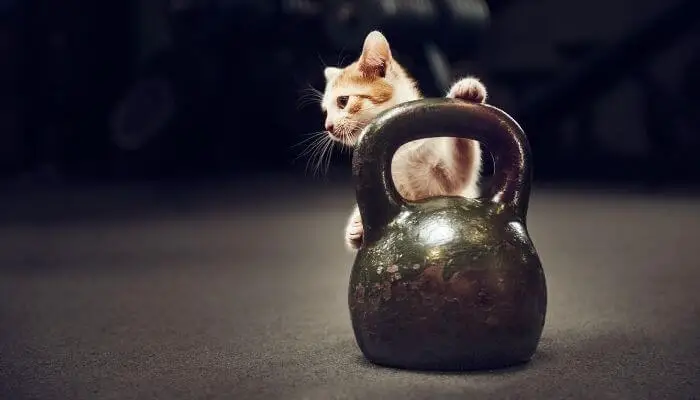
Next your cat should have regular exercise and playtime.
This is key to developing their muscles. Each day spend time participating in interactive play with your cat.
This will be a combination of mental and physical stimulation that gives your cat an opportunity to practice hunting and capturing the toy in question.
Once playtime is over, wind it down slowly so your cat has a chance to warm down at the end of the session.
10 minutes is a good amount of time to play and a few of these 10 minute sessions each day is ideal for helping your cat build up strength and develop healthy habits.
Support & Increase Your Cat’s Leg Muscles
If your cat is experiencing muscle atrophy due to arthritis, surgery or an injury you may be able to use massage therapy to help build up their leg muscles when they can’t support their own weight.
When your cat is laying on a blanket, gently massage their leg muscles.
If they are unable to support their own weight, place a hand on either side of the leg joint and slowly move the joint back and forth in the natural walking or pouncing motion.
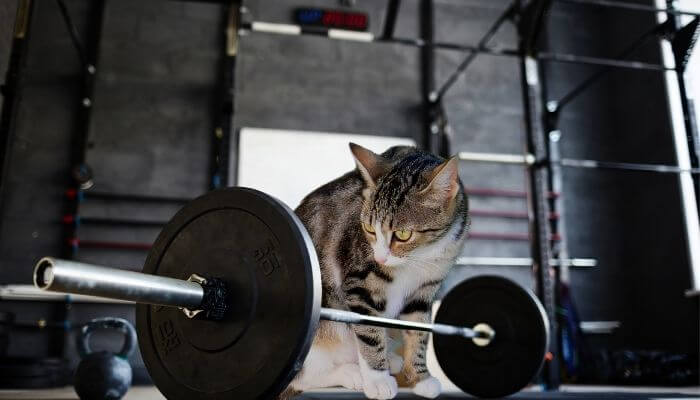
This helps to loosen the joints so the muscles can flex and the muscles can begin to build up.
The other thing you can do is hold your cat over a physical therapy ball and place their paws onto the ball. Keep supporting your cat and move the ball side to side.
This gentle movement will help to strengthen your cat’s leg muscles and improve their balance. You can do this for around 10 minutes, but stop earlier if your cat becomes restless.
Strongest Domestic Cat Breeds
Cats vary greatly in size and shape, there is no denying that some are stronger and more athletic than others. Below we have listed 8 of the strongest domestic cat breeds in the world:
1. Egyptian Mau
The Egyptian Mau is known for being agile and athletic. This is the fastest domestic cat breed on the planet and is one of the best at jumping too.
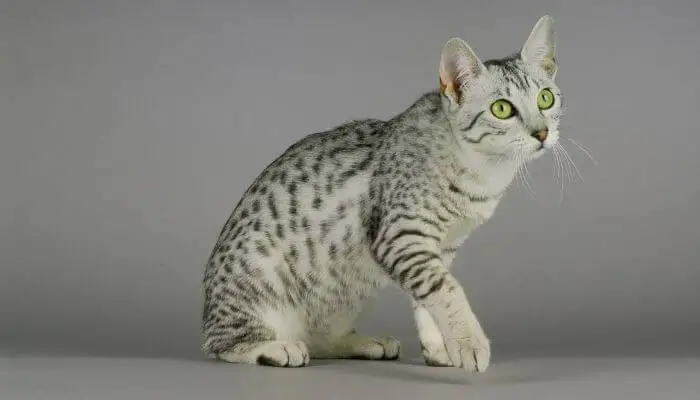
The Egyptian Mau has certainly earned a spot among the strongest domestic cat breeds on the planet.
2. Abyssinian
The Abyssinian breed is always on the go.
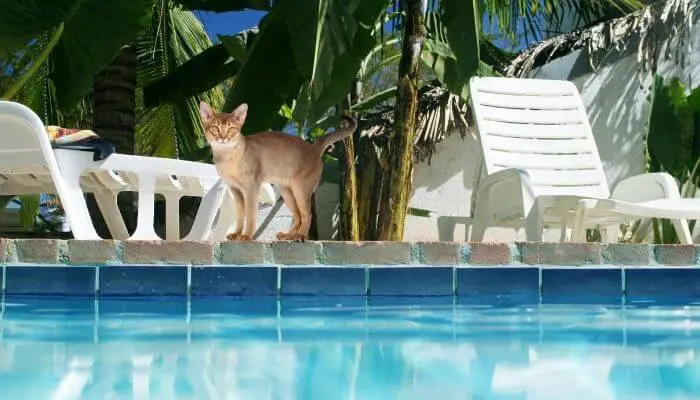
Abyssinian cats are athletic, strong and highly agile.
3. Somali
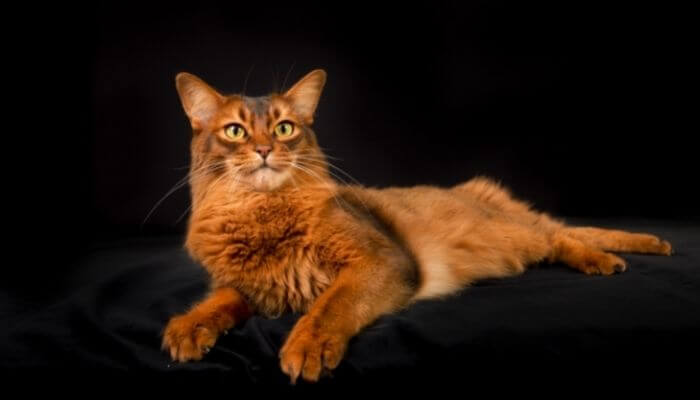
The Somali cat is strong but lean and is well suited to agility and participating in active training sessions.
4. Savannah
The Savannah is a cat breed that loves to climb. Savannahs are one of the largest domestic cat breeds in the world.

They are a cross between domestic cats and Servals and they still have some wild traits. These cats are strong, fast and excellent at climbing to high places.
5. Bengal
Another cat breed that is always playing, climbing and running around is the Bengal cat.
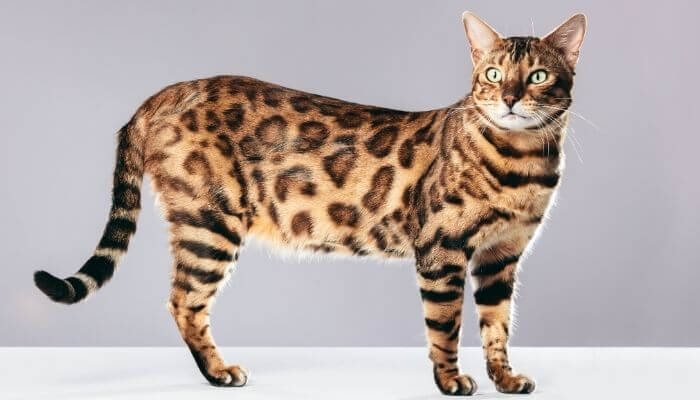
This is a cat that likes to push the limits and will pretty much do anything for your attention.
6. Ocicat
The large, muscular Ocicat is one of the quickest, most agile cats around.
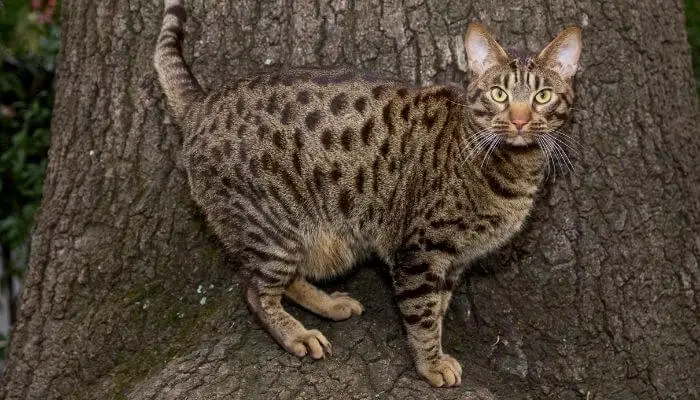
The breed is a combination of Abyssinians, American Shorthairs and Siamese breeds so it is no surprise the Ocicat is athletic.
7. Maine Coon
Maine Coon cats are the largest domestic cats without recent ancestral ties to wild cats. They are long, tall and strong.
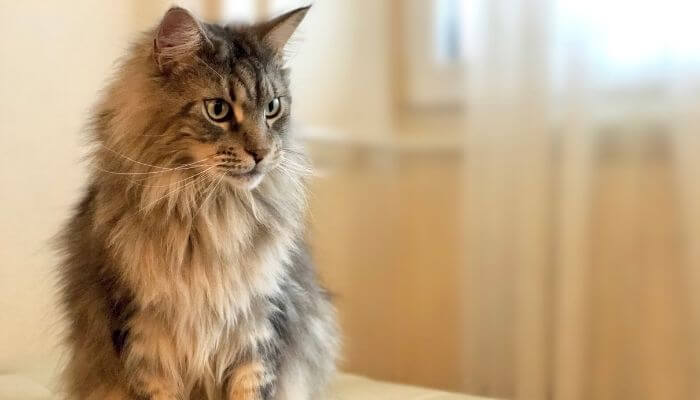
Maine Coon cats have excellent hunting skills and can move and jump with great speed.
8. Norwegian Forest Cat
This large, longhaired cat from Norway can handle harsh climates and were originally used for their impressive mousing abilities.
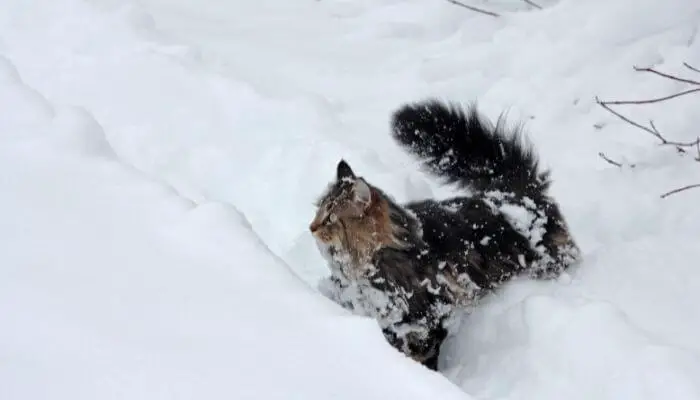
They are strong, powerful and talented hunters.
Summary
Although cats are relatively small and sleek, they are incredibly strong and agile. The strength of a cat is seen in their fast reflexes, their agility and their hunting skills.
Cats should not be underestimated, they have evolved to be impressive ambush hunters and even the most laid back house cats still have hunting instincts.
As an Amazon Associate I may earn a small fee from qualifying purchases at no extra cost to you. This helps us run the site, so thanks for your support!

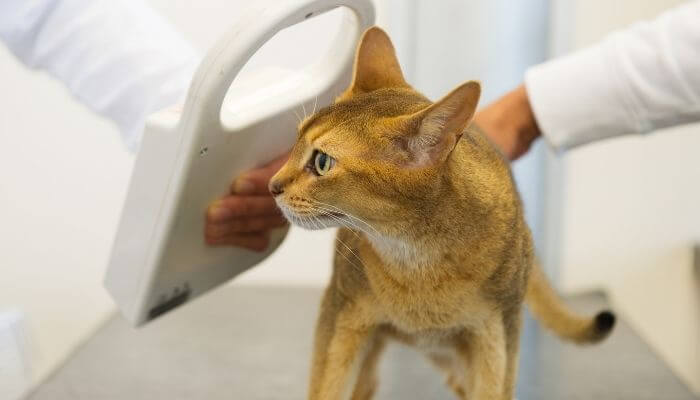
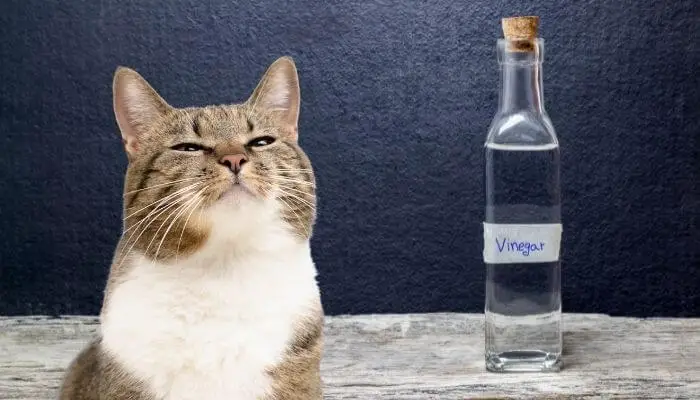
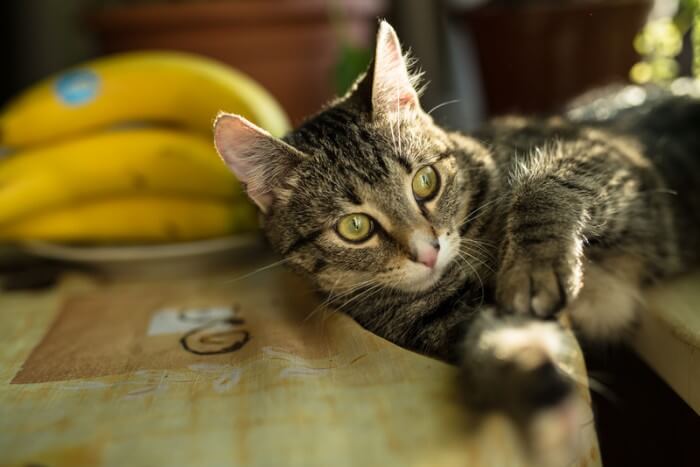
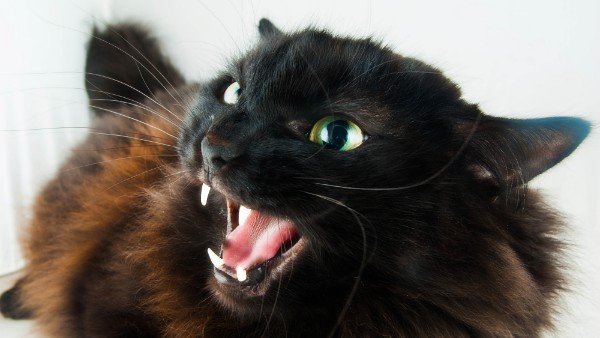
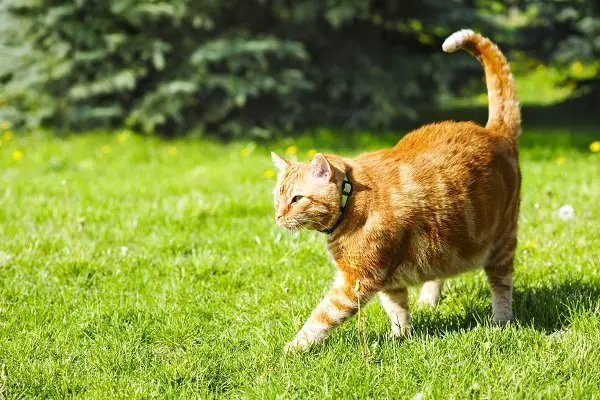

Leave a Comment